
Click picture for larger image

Click picture for larger image
In the asexual part of this cycle, germination and growth of a haploid asexual spore (conidium) results in a mass of branched threads (hyphae), which constitute a colony. Hyphae have no cross walls so a colony is essentially a single cell containing many haploid nuclei. A colony buds off millions more conidia from aerial hyphae, the multinucleate macroconidia and uninucleate microconidia, and these disperse and repeat the asexual cycle if they land on a suitable substrate.
In the sexual phase, when colonies of different mating type (simple forms of sexes) come into contact, their cell walls and nuclei fuse resulting in many transient diploid nuclei inside fruiting bodies called perithecia. Each diploid nucleus undergoes meiosis. The four haploid products of one meiosis stay together in a sac called an ascus. In Neurospora crassa each of the four products of meiosis undergoes a further mitotic division, resulting in an octad of eight ascospores within each ascus. Ascospores germinate and produce hyphae resulting in colonies exactly like those produced by asexual spores.
The following sections compares and contrasts the three types of life cycles.
Heterothallic (as above) means that there are two mating types that must unite to be able to go through the sexual cycle (which includes meiosis). The two mating types look identical. The two mating types are determined by alternative DNA sequences at one chromosomal locus; these are called MAT A and MAT a. These two mating type sequences are totally different, so they do not represent alleles; instead they are called idiomorphs. N. crassa is the most analyzed heterothallic species.
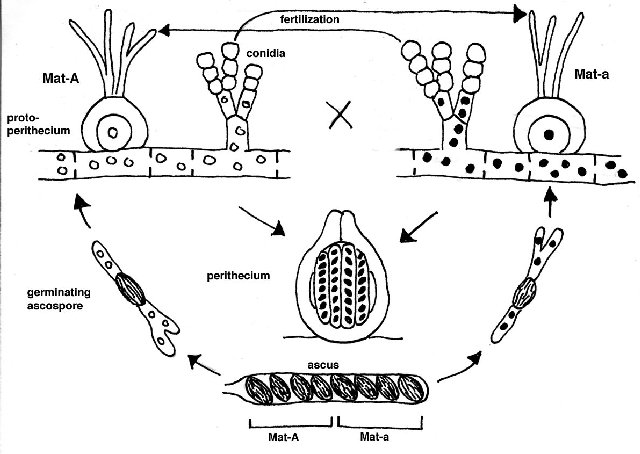
Click picture for larger image
Diagram of fertilization and perithecium (courtesy of T. Griffiths).
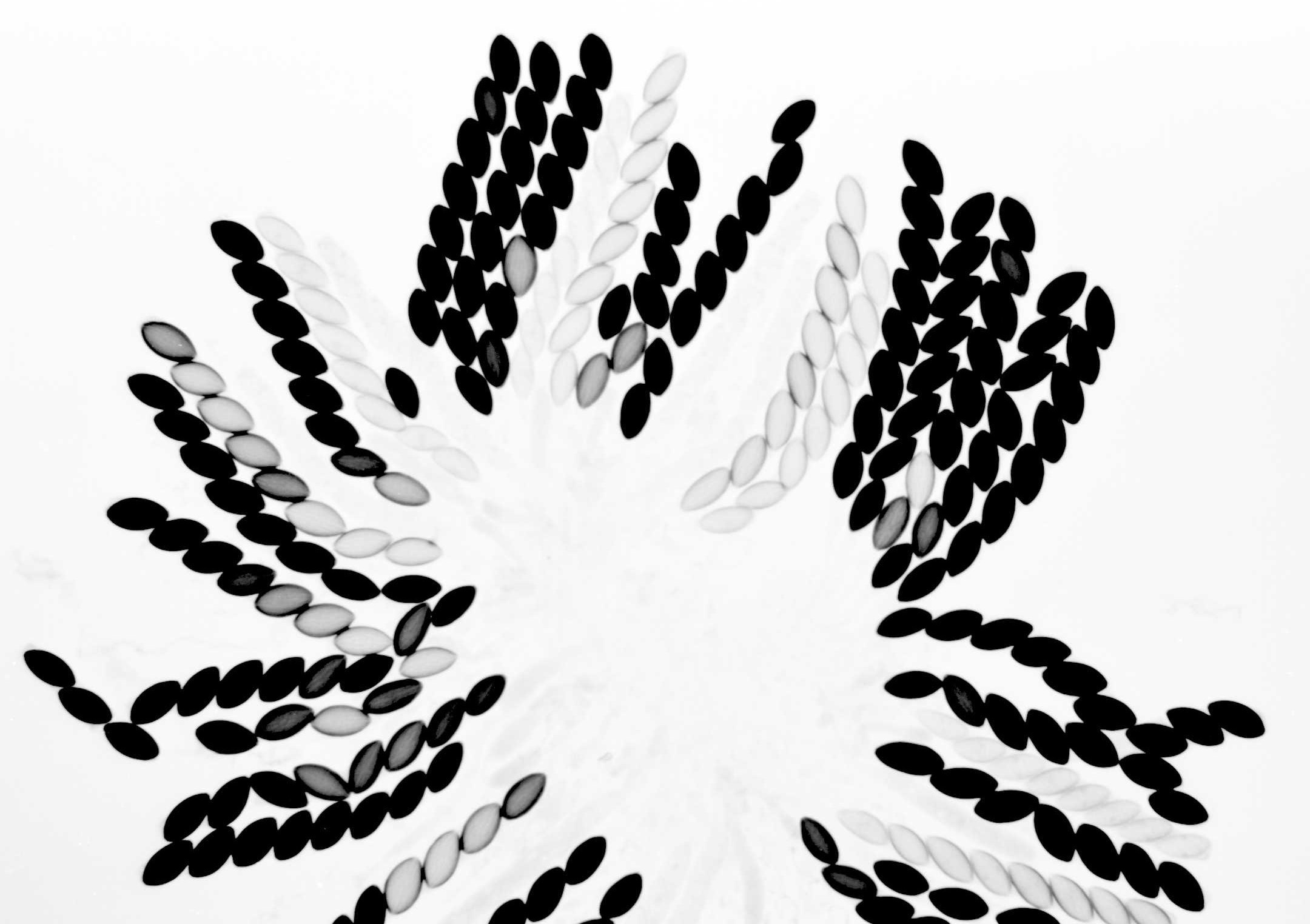
A squashed perithecium of N. crassa (courtesy of N. Raju)
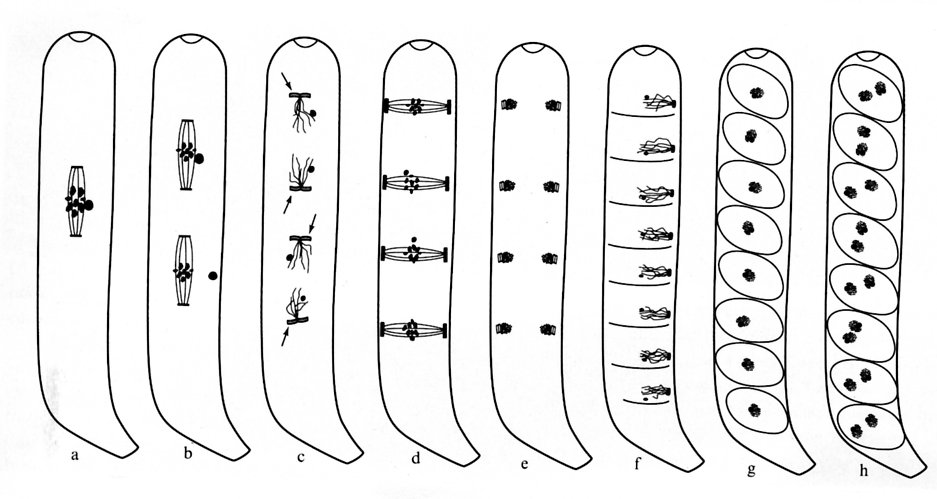
A diagram of ascus development (courtesy of N. Raju)
If the two mating types are inoculated on a petri dish, a single or double line of fruiting bodies (perithecia) from between them.

Image courtesy of M. Smith
Homothallic means that any haploid individual strain can go through the sexual cycle by itself, without pairing with another strain. Homothallic species do not need both MAT idiomorph sequences, but in some cases one or the other can be detected in the genomic sequence. Their role is not clear. In order to be able to go through meiosis as part of the sexual cycle, a diploid nucleus must form by fusion of two haploid nuclei. Neurospora galapagoensis is one homothallic species.

Click picture for larger image
Diagram of fertilization and perithecium (courtesy of T. Griffiths)


Ascus development is the same as in this heterothallic example (courtesy of N. Raju).
Pseudohomothallic species also require both MAT idiomorphs to complete the sexual cycle, but the nuclei that result from meiosis are packaged in such a way that one MAT A and one MAT a nucleus is included in any ascospore. Hence an individual spore will grow into a dual mating type mixture of nuclei, which has all that is necessary to go through the sexual cycle and need not pair up with any other individual to do so. N. tetrasperma is the best studied example of a pseudohomothallic species.
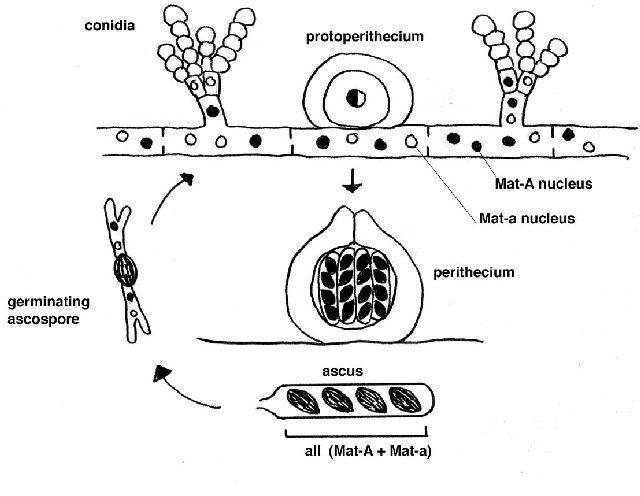
Diagram of fertilization and perithecium (courtesy of T. Griffiths).

Squashed perithecium from N. tetrasperma (courtesy of N. Raju).
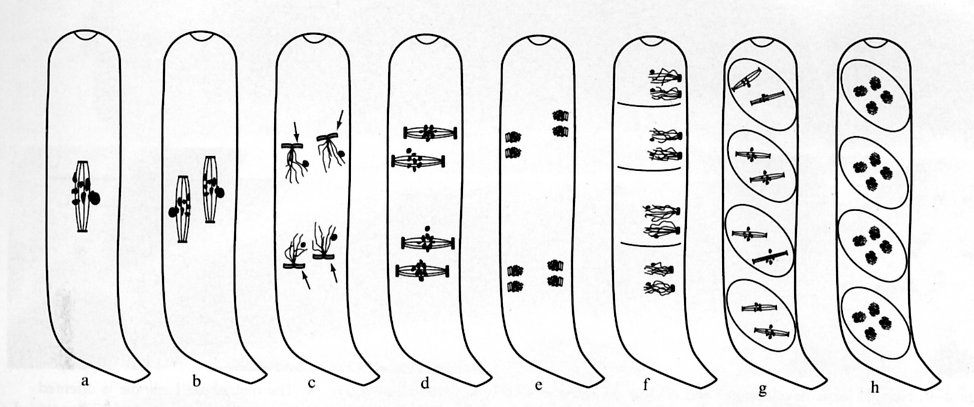
Pseudo-homothallic meiosis (Courtesy of N. Raju).
Last modified 8/4/04 KMC